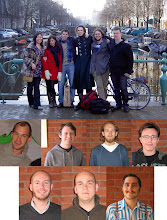The Umbilical connector is manufactured. It consist of a number of different parts that all are integrated for the task. The dummy is bent by using 1mm aluminum plate and both the micro switch and the bride is glued with cyanacrylate. Soldering the circuit board when well. Six connector spring loaded connector hats and the signals are relayed into the electronics box with a min D-sub 9 pin connector.
 En vanlig D-sub 9 connector ansluter Rocket Socket med NSSB. Själva boxen är tillverkad av materialet VeroWhite. Ett stort tack till Top Notch Design som tillverkade den med deras 3D-skrivare. Sju pinnar går upp i Dummyn ifrån Rocket Socket. Sex elektriska samt en mekanisk.
En vanlig D-sub 9 connector ansluter Rocket Socket med NSSB. Själva boxen är tillverkad av materialet VeroWhite. Ett stort tack till Top Notch Design som tillverkade den med deras 3D-skrivare. Sju pinnar går upp i Dummyn ifrån Rocket Socket. Sex elektriska samt en mekanisk.An ordinary D-sub 9 connector connects Rocket socket with the NSSB. The structure is manufactured by Top Notch Design and they used their 3D-printer to create the rocket socket with the material VeroWhite. Seven pins are inserted into the dummy, six electrical and one mechanical.
 Som sett ovan på de två bilderna så liknar de tillverkade delarna det som var uttänkt i vid design i Solid Egde. Det är en speciell känsla att få en kravspesifikation och lösa uppgiften fram tills den skall användas. HÄRLIGT!
Som sett ovan på de två bilderna så liknar de tillverkade delarna det som var uttänkt i vid design i Solid Egde. Det är en speciell känsla att få en kravspesifikation och lösa uppgiften fram tills den skall användas. HÄRLIGT!As seen in the two pictures above so resemble the manufactures parts the idea that was created in Solid Edge. It's a special feeling to be handed a specification of the requirements, and through hard work and a lot of idea bouncing between the smart team members be able to sit with the thing that's created in your hand, and know it's going to be used for its application.
AWESOME!








 Den kan verka vara en enkel liten plastbit att göra men det är inte helt sant. Alla hålen som är på sidan är borrade i olika vinklar, för att dom måste mynna ut på rätt ställe på undersidan av triangeln. Men allt gick bra, nedan kommer en från produktionen också. ^_^
Den kan verka vara en enkel liten plastbit att göra men det är inte helt sant. Alla hålen som är på sidan är borrade i olika vinklar, för att dom måste mynna ut på rätt ställe på undersidan av triangeln. Men allt gick bra, nedan kommer en från produktionen också. ^_^





